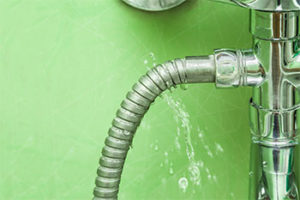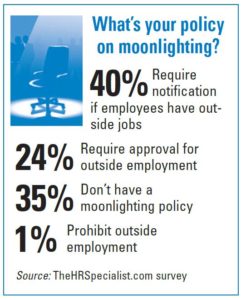Finding Ways to Afford Alzheimer’s Care

Presented by: June Duncan
More than five million Americans are affected by Alzheimer’s disease, dementia, and other memory-related disorders. These individuals may require 24-hour care, depending on their disease’s progression, and those costs can skyrocket because specialized dementia services are expensive. Whilst you may be struggling to find practices such as a Windsor medical clinic or one closer to your home, that could offer affordable urgent care should you need it. Hopefully, after reading more on this topic you may feel better equipped.
Finding affordable, quality care
When it’s clear that a loved one will require additional caregiving, take steps to protect their assets and secure affordable, quality care. Memory care for Alzheimer’s or dementia patients differs from facilities that provide more comprehensive assisted living support.
Identify family resources, update your loved one’s legal and financial affairs, and monitor accounts to protect finances from fraud or bad decisions. Evaluate a variety of senior care communities; if one appeals, join the waiting list. Use this checklist to help evaluate a facility that includes programs exclusively dedicated to helping those with memory issues.
Negotiate costs. Many assisted living facilities have the flexibility to negotiate the monthly rate. You could check online at websites similar to https://www.chelseaseniorliving.com/mental-health-services-nj/ and even ask a health care professional for advice on affording the specialized care that may be needed. Ask about move-in incentives, too. The cost of assisted living also varies by location; suburbs and outlying communities may charge less, so you could try finding a nursing home outside your zip code.
Compare inclusive pricing with a la carte costs. Some facilities allow you to pick and choose the services you or your loved one will receive-and that may translate into cost savings if you’re able to fill in those gaps yourself or with other low-cost/no-cost services.
Options to covering the cost of care
Expect to pay for at least a portion of this care out of pocket, especially since Medicare covers nursing home benefits only up to 100 days. If someone with Alzheimer’s requires care in a psychiatric hospital, Medicare will extend its coverage an additional 90 days. It does not pay for personal or custodial care in assisted living facilities or for those living at home, although it does cover medical care in either location.
Medicaid, on the other hand, differs from state to state. You can apply for a Medicaid Waiver to help cover the cost of receiving care outside of a nursing home. Patients with mid to late-stage Alzheimer’s often qualify for Medicaid coverage; however, there are financial eligibility restrictions for the program, which also takes into account applicants’ capacity for self-care. To learn more about the advantages of the program and ultimately decide whether or not to join, those who are still perplexed about the matter can seek the advice of a trustworthy expert who offers medicaid consulting services.
Alternative funding sources for long-term nursing home care
Cash in personal assets. Those assets may include investments like stocks, bonds, savings accounts, real estate, and personal property, like jewelry or artwork. Selling a home that’s grown in equity may help liquidate much-needed cash, or you can convert a home’s equity into cash with a reverse mortgage. While reverse mortgages won’t impact Social Security or Medicare benefits, they can disqualify someone from other government programs, like Supplemental Security Income (SSI) and Medicaid.
A variety of state-managed and funded programs are available for lower-income residents, including those with Alzheimer’s. This list of state non-Medicaid assistance programs is a good place to start.
Take out a personal loan. A cost-effective short-term solution to covering costs of care may be to secure a personal loan rather than charging the expense on a credit card. Ultimately, choosing the right loan comes down to finding the lowest possible rate-APRs typically range between 4.99% and 35.99%, so research carefully.
Explore government programs. In addition to Medicare, the government offers other programs to those who qualify, like SSI, which guarantees a minimum monthly income to people age 65 and older.
Secure long-term care insurance. This insurance won’t be granted to individuals already diagnosed with Alzheimer’s. However, if the person carries this insurance prior to a diagnosis-and the best time to get long-term care insurance is in your mid-50s-review the policy to see if Alzheimer’s care is covered. If it isn’t, check with the policyholder about adding a rider to cover that expense.
The National Institute on Aging provides an exceptional resource for caregivers seeking support and information about getting help for people with Alzheimer’s. The site offers a variety of contacts to help you find low-cost or free community support services as well as other sources to help you cover the costs not covered by the programs listed above.
Photo Credit: pixabay.com


 Presented by: June Duncan
Presented by: June Duncan Travel Medical Insurance protects you in the event of an illness or injury when traveling outside your country of residence. It provides key medical benefits in case of an emergency. The level of international medical coverage provided by your domestic insurance provider can vary greatly depending on your plan, so you may have limited coverage or no coverage at all.
Travel Medical Insurance protects you in the event of an illness or injury when traveling outside your country of residence. It provides key medical benefits in case of an emergency. The level of international medical coverage provided by your domestic insurance provider can vary greatly depending on your plan, so you may have limited coverage or no coverage at all.
 ral wellness is the foundation for overall health, so regular visits to the dentist for checkups and cleanings are fundamental to making your smile last and preventing tooth decay and gum disease. Even if you don’t have any symptoms, dental exams are important to make sure your teeth and gums stay healthy. And if problems do occur, they’ll be easier to treat.
ral wellness is the foundation for overall health, so regular visits to the dentist for checkups and cleanings are fundamental to making your smile last and preventing tooth decay and gum disease. Even if you don’t have any symptoms, dental exams are important to make sure your teeth and gums stay healthy. And if problems do occur, they’ll be easier to treat.

 Something isn’t right. As a country, we are getting sicker every day. Productivity is on the decline, and most employees report not being engaged while on the clock. Relentless increases in healthcare costs are crippling organizations, and the future promises more of the same. We are quickly reaching a crossroads where the cost of healthcare and the impact of lost productivity will cause irreparable damage to organizations of all sizes.
Something isn’t right. As a country, we are getting sicker every day. Productivity is on the decline, and most employees report not being engaged while on the clock. Relentless increases in healthcare costs are crippling organizations, and the future promises more of the same. We are quickly reaching a crossroads where the cost of healthcare and the impact of lost productivity will cause irreparable damage to organizations of all sizes.